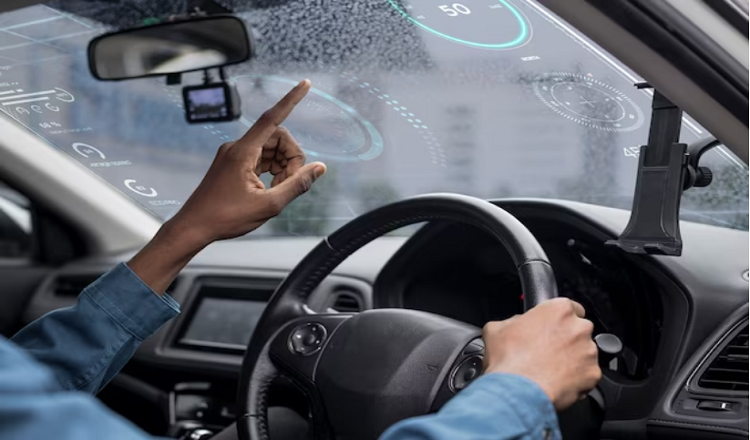Welcome to the exciting world of virtual reality (VR) in the automotive and transportation industry! With its ability to simulate realistic environments and scenarios, VR technology has found a new home in the automotive and transportation sector. The industry has been quick to adopt VR in various areas, including design, marketing, training, logistics, and more. In this article, we will explore the fascinating ways in which virtual reality is being integrated into the automotive and transportation industry, and its importance in shaping the future of the industry.
As we dive into the topic of VR in the automotive and transportation industry, you might be wondering why this technology is becoming so crucial to the industry’s success. With the rapid pace of technological advancements, it has become increasingly important for the industry to adopt innovative solutions to remain competitive. VR offers a unique opportunity for companies to enhance their operations, reduce costs, and improve customer experiences. In this article, we will examine the benefits, challenges, and future of virtual reality in the automotive and transportation industry, and provide insights into how companies can leverage this technology to stay ahead of the game. So buckle up and let’s take a ride into the exciting world of VR in the automotive and transportation industry!
Benefits of virtual reality in the automotive and transportation industry
The integration of virtual reality (VR) in the automotive and transportation industry is offering a wide range of benefits that are transforming the industry in many ways. One of the most significant benefits is its impact on vehicle design and prototyping. With the help of VR, designers and engineers can create and visualize complex designs in a virtual environment, which allows for quick and efficient iterations without the need for physical prototypes. This not only reduces costs and time to market but also enables the design team to collaborate and communicate more effectively, resulting in better-designed vehicles.
Moreover, VR is also revolutionizing employee training and development in the industry. By simulating realistic scenarios, such as hazardous driving conditions, vehicle assembly processes, and maintenance procedures, employees can
receive hands-on training in a safe, controlled environment. This immersive training not only improves their skills and knowledge but also enhances their confidence and decision-making abilities, which ultimately leads to improved performance in their job roles. This is particularly important for high-risk job roles, such as drivers and assembly line workers, where training in a safe and controlled environment is crucial to ensure their safety and reduce the risk of accidents.
Another area where VR is proving to be highly beneficial is in manufacturing processes, where it is improving safety and efficiency. With the use of VR, manufacturers can simulate complex assembly line processes and identify potential issues before they occur in the real world. This allows for optimization of the assembly line, reducing production time and costs, and improving product quality. Additionally, VR can be used for remote maintenance and repair of vehicles, where technicians can diagnose and fix problems in real-time, without the need for physical presence.
Virtual reality is transforming the automotive and transportation industry by providing a wide range of benefits, including improved vehicle design, enhanced employee training, and increased safety and efficiency in manufacturing processes. As the technology continues to evolve, it is expected to revolutionize the industry even further, making it more competitive and sustainable in the long run.
Virtual reality in transportation and logistics
The use of virtual reality (VR) is not limited to vehicle design and employee training in the automotive and transportation industry, as it has also found its way into transportation and logistics. With its ability to simulate realistic scenarios, VR is revolutionizing the way transportation and logistics companies operate, offering new opportunities to optimize their processes and enhance customer experiences.
One of the most significant benefits of VR in transportation and logistics is its ability to simulate complex driving scenarios and train drivers. With the help of VR, drivers can be trained in various scenarios, such as hazardous driving conditions and emergency situations, which allows them to develop their skills and experience in a safe, controlled environment. This not only improves driver performance but also reduces the risk of accidents and improves road safety.
In addition, VR is also transforming supply chain management and logistics planning by enabling companies to simulate and optimize their processes. By using VR, logistics companies can model and simulate different scenarios, such as warehouse layouts and delivery routes, which allows them to identify and eliminate inefficiencies and reduce costs. Moreover, VR can also be used for real-time tracking and monitoring of goods and vehicles, providing logistics companies with a more comprehensive view of their operations and enabling them to make better-informed decisions.
Furthermore, VR is also being used to create virtual showrooms and interactive product presentations. This allows customers to experience the products in a virtual environment, providing them with a more immersive and engaging experience. This is particularly important in the current digital age, where customers are increasingly demanding more interactive and personalized experiences.
Virtual reality is transforming the transportation and logistics industry, offering new opportunities for companies to optimize their processes and enhance customer experiences. With its ability to simulate realistic scenarios, train drivers, optimize supply chain management and logistics planning, and provide real-time tracking and monitoring of goods and vehicles, VR is becoming an essential tool for companies operating in this industry.
Upcoming difficulties of virtual reality in the automotive and transportation industry
While virtual reality (VR) offers numerous benefits to the automotive and transportation industry, there are also upcoming difficulties and challenges that need to be addressed for successful integration. One of the primary challenges is the integration of VR with other emerging technologies, such as artificial intelligence and augmented reality. As the industry becomes more connected and digitized, it is essential to ensure that VR solutions are compatible with other technologies and can work seamlessly to optimize processes and provide a more comprehensive view of operations.
Another significant difficulty is the impact of VR on autonomous and electric vehicles. While VR can be used to simulate and train for various driving scenarios, it is unclear how it will impact the development and deployment of autonomous and electric vehicles. For instance, it is uncertain whether VR simulations can accurately replicate the complexities and unpredictability of real-world driving conditions, which may impact the development of autonomous vehicles.
Moreover, there is the potential for virtual reality to revolutionize the entire industry, which may also pose some difficulties. As companies begin to incorporate VR into their operations, they will need to invest in new equipment and technology, which can be costly. Additionally, scaling up VR solutions for large-scale applications can also be challenging, as it requires significant investment in hardware and software.
Another challenge is the need for extensive training and technical support for successful implementation. As VR technology is still relatively new, there may be a shortage of skilled professionals who can operate and maintain the equipment. Companies will need to invest in training and support to ensure that their employees can use the technology effectively and safely.
In conclusion, while virtual reality offers significant benefits to the automotive and transportation industry, there are also upcoming difficulties and challenges that need to be addressed for successful integration. These include the integration with other emerging technologies, the impact on autonomous and electric vehicles, the potential for revolutionizing the entire industry, high costs of technology and equipment, difficulty in scaling up solutions for large-scale applications, and the need for extensive training and technical support. As the industry continues to evolve, it is essential to address these challenges and work towards successful implementation of VR solutions.




